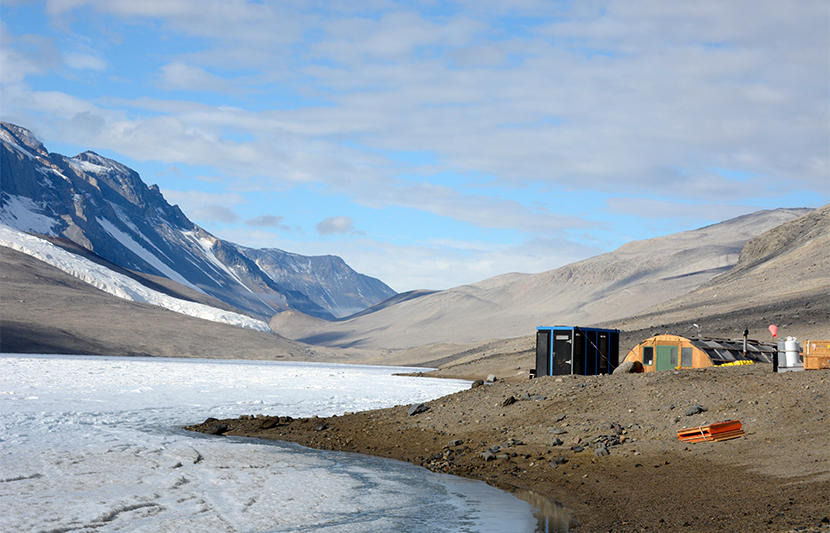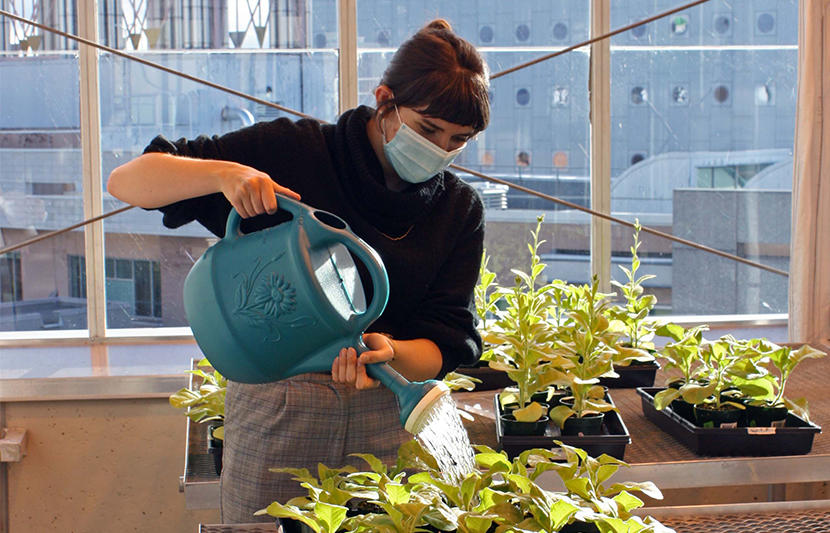“When trying to figure out what type of biologist I wanted to be, I quickly realized just how important plants and algae are — to people, to the environment and to our very existence. So, in our lab, we’re interested in learning how these photosynthetic organisms operate and what effects climate change have on them,” says Professor Marina Cvetkovska, who leads a research lab in the Department of Biology and heads the Core Molecular Biology and Genomics Laboratory, one of 26 core facilities at the University of Ottawa.
Using the core facility’s cutting-edge research equipment, Cvetkovska and her graduate students test the limits of algae and plants to see how they respond to different stressors, including warming temperatures, unseasonal cold snaps and waterlogging (or flooding) due to heavy rains and snowmelts.
“Our long-term goals are to devise strategies to improve the growth and productivity of these important primary producers,” she says.

Why polar algae should be left out in the cold
Algae are the primary producers in polar ecosystems because they’re the only photosynthetic organisms that can survive in below freezing temperatures. They also play an important role in regulating the global climate because they sequester nearly half of the planet’s carbon dioxide in the polar regions.
“Rising temperatures are threatening the survival of the cold-adapted organisms that thrive in these habitats,” says Cvetkovska. “If polar algae are negatively affected by global warming, the entire food web will be affected. That’s why learning more about them is crucial.”
What makes polar algae capable of thriving in extreme conditions, and how warm is too warm for them? To answer these questions, Cvetkovska and her graduate student Galyna Vakulenko (MSc, ’22) studied Chlamydomonas priscuii, a species of polar algae that lives under the ice of Lake Bonney, in Antarctica.
Using equipment from the Core Molecular Biology and Genomics Laboratory, Vakulenko exposed the algae to a variety of environmental stressors that threaten polar ecosystems — increased temperatures, salinity or light conditions — and measured the changes in their gene expression, the process through which they respond to different conditions over time.
Vakulenko found that a gene family of heat shock proteins (HSPs) is much more prevalent in polar algae than in other organisms. Whereas HSPs usually “turn on” to protect organisms from stressful conditions, they’re always active in polar algae. This suggests that HSPs are necessary for enabling life in extreme cold.
Her findings also showed that when exposed to changing conditions, polar algae didn’t respond well. For example, when temperatures hit above 15 degrees, this sensitive species died within a day. The HSPs that typically help organisms adapt to environmental changes did nothing to protect polar algae from heat stress.
“The polar alga we studied is well adapted to its extreme Antarctic habitat, but it doesn’t react to changes in its environment, which suggests that it’s particularly vulnerable to climate change,” says Vakulenko. “This work helps us understand the effects of global warming on polar ecosystems, and it could also lead to strategies for improving cold tolerance in temperate plants and green algae.”

Helping plant farmers maximize their yields
In a different vein, in 2020, a local cannabis grower approached Cvetkovska and graduate student Josephine Payment (MSc, ’23) to find out what was the best time of year to plant seeds.
“They were worried that their plants would suffer severe damage if they planted them too early, say in April, when there’s still a high chance of bad weather — like that terrible ice storm we just had,” says Cvetkovska. “But waiting until the weather stabilizes means plants have less time to grow, and therefore produce lower yields. Basically, they wanted to know if their plants could withstand the bad weather or if they were better off waiting.”
Payment tackled this research question for her master’s thesis, using infrastructure from the core facility. She exposed plants to cold snaps, waterlogging and a combination of both stressors, to mimic Ontario’s early spring conditions.
Going into the experiment, the researchers believed that two simultaneous stressors would severely damage the plants. But that wasn’t the case. The plants that were hit with both a cold snap and flooding fared better than those exposed to flooding alone.
“Cold exposure may therefore have a protective effect on plant growth because it triggers them to temporarily go dormant,” says Cvetkovska. “So, our take-home message to growers is that there’s not much danger in planting their seeds early. Plants might stop growing while conditions are unfavourable, but the evidence we gathered showed that they’d bounce back.”
Payment used tobacco plants as a model for her experiment and Cvetkovska will be testing her student’s hypothesis on other crops relevant to Canadian agriculture, including soybeans, barley and wheat.
“Stressors like cold snaps, snowmelt and waterlogging are detrimental to early plant growth and are the cause of major loss in agricultural productivity world-wide,” says Payment. “But very little is known about how plants respond to these stressors in combination. Research in this area of plant biology has a lot of potential for improving agriculture and providing clear directions for plant breeding.”


